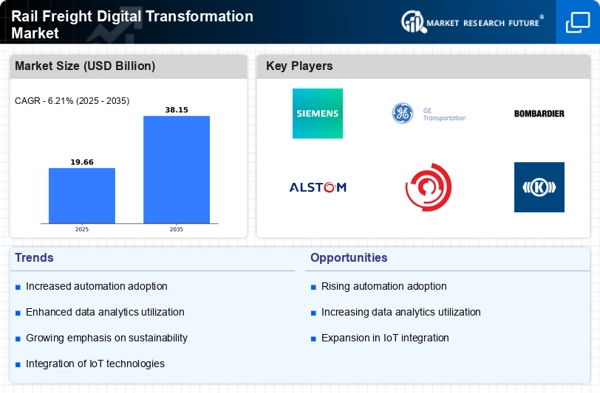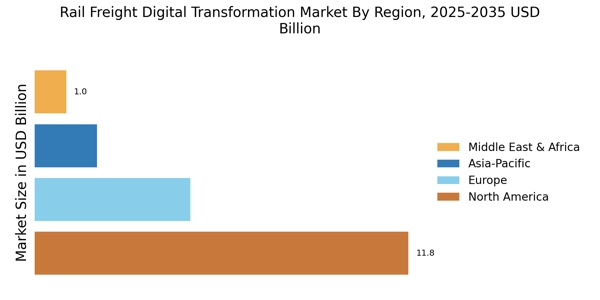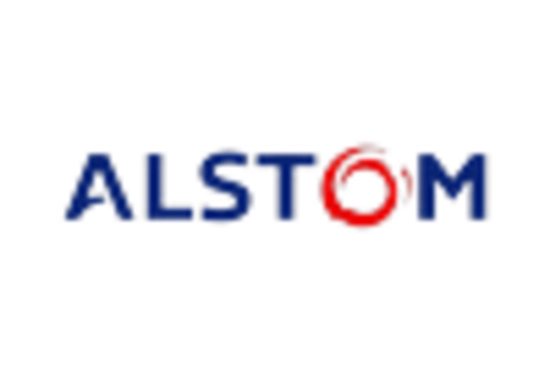The Rail Freight Digital Transformation Market is currently characterized by a dynamic competitive landscape, driven by the increasing demand for efficiency, sustainability, and technological innovation. Key players such as Siemens (DE), GE Transportation (US), and Alstom (FR) are at the forefront of this transformation, each adopting distinct strategies to enhance their market positioning. Siemens (DE) focuses on integrating advanced digital solutions into rail operations, emphasizing automation and data analytics to optimize freight logistics. Meanwhile, GE Transportation (US) is leveraging its expertise in IoT and predictive maintenance to improve operational efficiency and reduce downtime, thereby enhancing customer satisfaction. Alstom (FR) is actively pursuing partnerships and collaborations to expand its digital offerings, particularly in the realm of smart rail systems, which positions it as a leader in sustainable rail solutions.
The business tactics employed by these companies reflect a concerted effort to localize manufacturing and optimize supply chains, which are crucial in a moderately fragmented market. This competitive structure allows for a diverse range of solutions, catering to various regional needs while fostering innovation. The collective influence of these key players is shaping a market that is increasingly focused on digital transformation, with an emphasis on enhancing operational efficiencies and reducing environmental impact.
In August 2025, Siemens (DE) announced a strategic partnership with a leading logistics provider to develop a comprehensive digital platform aimed at streamlining freight operations across Europe. This collaboration is expected to enhance real-time tracking and improve supply chain visibility, thereby addressing the growing demand for transparency in logistics. The strategic importance of this move lies in Siemens' commitment to positioning itself as a leader in digital rail solutions, potentially setting new industry standards for operational efficiency.
In September 2025, GE Transportation (US) unveiled its latest AI-driven predictive maintenance tool, designed to minimize equipment failures and optimize maintenance schedules for freight operators. This innovation is particularly significant as it aligns with the industry's shift towards data-driven decision-making, allowing operators to reduce costs and improve service reliability. By integrating AI into its offerings, GE Transportation is likely to enhance its competitive edge in the market, appealing to clients seeking advanced technological solutions.
In July 2025, Alstom (FR) launched a new suite of digital services aimed at enhancing the sustainability of rail freight operations. This initiative includes tools for energy management and emissions tracking, reflecting a growing trend towards environmental responsibility in the industry. Alstom's proactive approach not only addresses regulatory pressures but also positions the company as a forward-thinking leader in sustainable rail solutions, likely attracting environmentally conscious clients.
As of October 2025, the competitive trends in the Rail Freight Digital Transformation Market are increasingly defined by digitalization, sustainability, and the integration of AI technologies. Strategic alliances among key players are shaping the landscape, fostering innovation and enhancing service offerings. Looking ahead, it appears that competitive differentiation will evolve from traditional price-based competition to a focus on technological innovation, supply chain reliability, and sustainability initiatives, which are becoming paramount in the industry.


















Leave a Comment